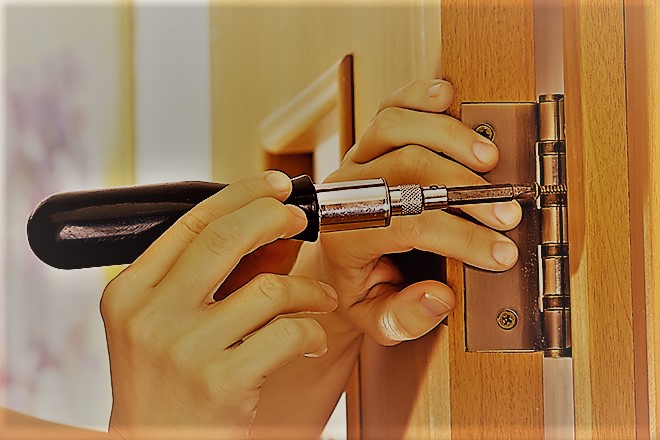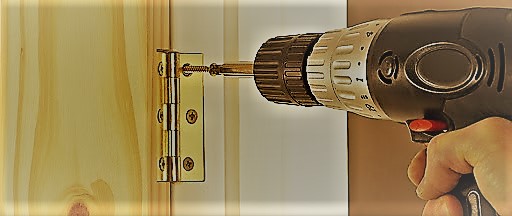So, if you’ve got an indoor door with loose hinges and need to seek out a solution to the difficulty, you’ve got come to the proper place. Here, we’ll assist you maintain the sound-less, smooth door. By using this easy-to-follow procedure, you’ll not only add a replacement skill to your repertoire but also save your hard-earned money that was destined to go to an upscale professional.
Causes:
The question is what really causes all this disruption? If the hinge screws are loose for not an extended time, you tighten them with a screwdriver and stop any longer damage. However, when hinge screws are loose and left unattended, the hinge plate’s constant movement starts to cause the screws to widen the holes of the screw. The holes gradually get so wide that the screws cannot stay tight. This leads to the screws being stripped and that they find yourself being useless!
WHAT you would like to try to do
If you notice that the door remains sagging after tightening the hinge screws, then it means there’s a drag of widened holes that has got to be patched. Repair one screw hole at a time to stop you from removing/changing the whole door and to save lots of your valuable time and energy. this is often how you would like to try to do it:
Tool You’ll Need
- 3-in (zinc plated) screw
- Carpenters glue
- Drill Machine
- Hammer
- Screwdriver
- Screws
A smaller drilling bit (to drill new holes after the prevailing holes are patched)
Let’s Started to fix Loose Door Hinges:
All you’ve got to try to do is replace the hinge screw of ¾ inch with a 3-inch hinge screw that easily goes through the points, hence becoming the anchor within the frame to offer a decent grip.
The method for tightening loose door hinges is sort of simple. First, you’ll get to find the loose screws and take away them. Then, you’ll get to dip the bare end of a wooden match within the same carpenter’s glue and hammer it all the way in, pushing it as far because it goes. Break or maybe stop the matching flush with the hinge plate and take away the heads.
-
- Before removing the screw and letting go of the door, you would like to offer it firm support by holding or putting an important object ahead in order that it doesn’t fall off.
- Remove the screws carefully with the assistance of a screw screwdriver or drill machine in reverse action.
- so as to fill the additional gap within the hole, dip the bare end of a wooden match into the carpenter’s glue, and push it into the opening with the assistance of a hammer (if required).
- After filling the additional gap within the holes with the wooden matches or dowels, take the screw and therefore the driver of the specified shape and size. Start spinning the screws into the holes with pressure in order that the screw’s slot in properly, hence giving the door a decent grip.
- Don’t rush anything and let the glue dry appropriately because it helps make sure the screws don’t slip due to the wet glue and slot in the proper position. Use a humid washcloth to wash the gluey fiddle the holes. However, confirm that you simply don’t shove the wooden matches or dowels in too far.
- Follow the equivalent steps mentioned above with subsequent screw-hole to fill the additional gaps and fit the screw in it.
- Cross make sure all screws are tightly fit and are settled in their holes before you remove the support.
- within the end, coat the oil on the hinges to reinforce the smoothness of the door, but there’s no got to overdo it. Let the oil soak into the wood for a couple of hours then reinstall the screws.
Important Info:
Instead of matching, you’ll use glue-coated wooden golf tees to plug a stripped screw hole golf tees that are tapered to suit easily within the screw hole.
If your door only has 3 holes, it might be recommended to feature just one 3-inch screw that ought to be drilled carefully during a newly created space instead of the old one
Consider in your power tool against a driver bit just to form sure you do not use an excessive amount of pressure and strip back the screws.
For dry wood, it’s best to use self-drilling. Screws with points on them are intended to be used in new wood which still contains liquid. Be delicate and use self-drilling screws of 1.5 inches or 2 inches and if you would like to, you’ll remove the screws within the future.
Precautions:
The cycle of a loose hinge often begins with just one loose screw. Many of us don’t pay much attention to a sticking door until it becomes too big a drag to ignore. People should concentrate on even slightest signs to avoid the matter altogether. If the replacement of the screws by the above-mentioned method doesn’t work and the problem recurs, there’s another solution: plane the door with a belt sander. If you’re unable to try to do it, then we might highly recommend you look for an expert person for the task. HOMD Home Maintenance Dubai is always ready to assist you with our excellent services 24/7.
FAQ’S
What tools do I need to fix loose door hinges?
You’ll typically need a screwdriver and possibly wood filler or longer screws, depending on the severity of the issue.
Why are my door hinges becoming loose?
The reason of loose hings is frequently use of worn-out-screws 0r setting of the door frame.
When should I consider using wood filler for loose door hinges?
If the screw holes are stripped or enlarged, using wood filer before reiserting screws can help provide a stronger anchor.


